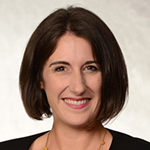Learn About the Sounds and Music of Campus on a ‘SoundWalk’
Faculty, staff and students can learn about the sounds and music of Duquesne University simply by taking a walk with their smart device around campus and participating in a new interactive installation created by students in the Mary Pappert School of Music.

The inaugural student-created SoundWalk is a guided tour that encourages participants to interpret the environment, culture and history through sound. Using their smart device, they can scan QR codes found on the sign at each location that links to the Duquesne University WIX website. To support COVID-19 protocols, the SoundWalk is currently open only to University employees and students.
“It brings attention to the sounds that people encounter everyday on campus,” said Assistant Musicianship Professor Dr. Nicole Vilkner, whose students in her music and soundscape class worked on the project. “It also has an archival history component.”
The Duquesne SoundWalk features 12 exhibits or “SoundSites” throughout campus—with three more being added soon—that participants can experience in any order. Each reflects the interest of the respective student designer who selected a campus location.
Students were asked to create a SoundSite that addresses either activist (focus on environmental activism), historical (focus on how sound changes over time) or aesthetic (focus on the quality of music and sounds) matters.
Some of the SoundSite topics include:
- The sounds of Academic Walk 50 years ago when it was still a residential street
- The musical characteristics of bird calls heard on campus
- The 1914 arrangement The Lark Ascending, by English composer Ralph Vaughan Williams, and the declining lark population in northwestern Pennsylvania
- The sounds of sports on Arthur J. Rooney Field that also includes analysis of the voice of the late Duquesne basketball announcer Dom Errico.
Each SoundSite also poses a question and includes a jotform through which participants can provide an answer.
“This was a very collaborative project overall,” Vilkner said. “The students read each other’s SoundSite drafts, and they met in groups to talk about their idea and to give each other feedback.
Each SoundSite location, from the Lourdes Grotto to Bluff Street and more, is listed on the Duquesne University WIX website, along with bios of Vilkner and the students.
Vilkner, who developed the idea of the SoundWalk project, researches the ways that the urban-built environment affects music making. Her research and teaching interests also include urban history, soundscapes, salon culture, opera, architecture of performance spaces and the material cultures of music.
